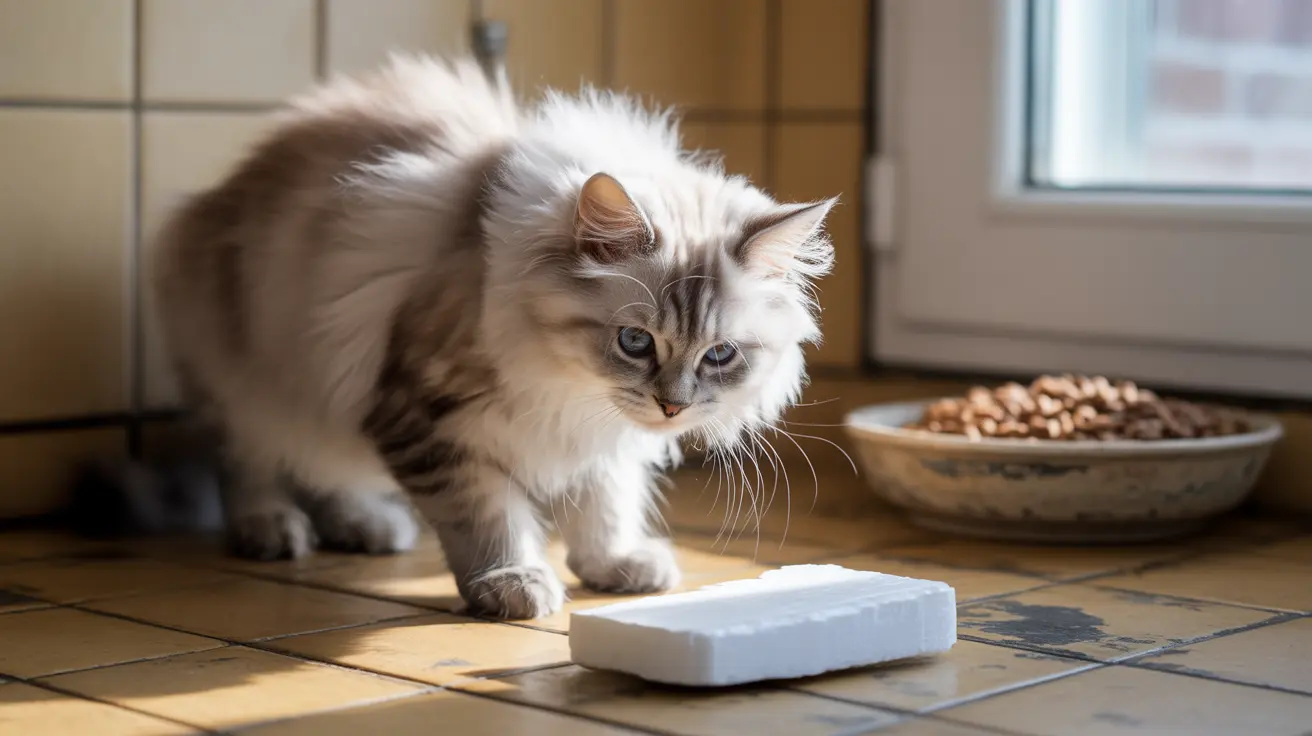When your cat encounters Styrofoam, it's natural to worry about potential toxicity and health risks. While Styrofoam isn't chemically toxic to cats in most cases, ingestion can lead to serious complications, particularly gastrointestinal blockages that require immediate veterinary attention.
Let's explore the real risks of Styrofoam ingestion in cats, what symptoms to watch for, and the critical steps you need to take if your feline friend decides to make a snack out of this common packaging material.
Understanding Styrofoam and Its Effects on Cats
Styrofoam, technically known as expanded polystyrene, is a synthetic material commonly found in packaging, disposable containers, and insulation. While not immediately toxic to cats, its indigestible nature poses significant health risks when ingested.
The primary concern isn't chemical poisoning but rather the physical dangers of this non-biodegradable material. Unlike some pet-safe packaging alternatives, Styrofoam doesn't break down in your cat's digestive system.
Recognizing the Warning Signs of Styrofoam Ingestion
If your cat has eaten Styrofoam, watch for these critical symptoms:
- Vomiting (especially frequent attempts)
- Loss of appetite
- Lethargy or unusual behavior
- Abdominal pain or distention
- Changes in bowel movements
- Difficulty defecating
These symptoms could indicate a developing blockage, which requires immediate veterinary attention.
Emergency Response and Treatment Options
If you catch your cat in the act or suspect Styrofoam ingestion, take these immediate steps:
- Remove any remaining Styrofoam
- Document how much was consumed (if possible)
- Contact your veterinarian immediately
- Monitor your cat closely for symptoms
Your veterinarian may recommend various treatments depending on the situation:
- Monitoring and observation for small amounts
- X-rays or ultrasound to locate blockages
- IV fluids for dehydration
- Surgery in cases of obstruction
Prevention Strategies for Cat Owners
Protecting your cat from Styrofoam exposure is crucial. Implement these preventive measures:
- Store Styrofoam materials in sealed containers or closed rooms
- Dispose of packaging materials promptly
- Consider eco-friendly alternatives when possible
- Provide appropriate toys and enrichment to prevent boredom
- Create a cat-safe environment by regular home inspection
Frequently Asked Questions
Is Styrofoam toxic or poisonous to cats if they eat it?
While Styrofoam isn't chemically toxic to cats, it can cause serious physical complications like intestinal blockages. The material cannot be digested and may require surgical removal if it causes an obstruction.
What are the signs that my cat has eaten Styrofoam and could have an intestinal blockage?
Key signs include vomiting, lethargy, loss of appetite, abdominal pain, and changes in bowel movements. If you notice these symptoms, seek veterinary care immediately.
What should I do immediately if my cat eats Styrofoam?
Contact your veterinarian right away for guidance. Don't induce vomiting unless specifically instructed by a professional. Monitor your cat closely for any changes in behavior or symptoms.
Can cats digest Styrofoam, and how long does it take to pass through their system?
Cats cannot digest Styrofoam. If small pieces are ingested, they may pass through the digestive system within 10-24 hours. However, larger pieces can cause dangerous blockages and won't pass naturally.
How can I prevent my cat from chewing or eating Styrofoam around the house?
Keep Styrofoam materials out of reach, dispose of packaging promptly, provide appropriate toys for enrichment, and consider using pet-safe alternatives when possible. Regular environmental enrichment can help prevent destructive behaviors.
Remember, while Styrofoam ingestion is a serious concern, prompt action and proper veterinary care can lead to positive outcomes. Always err on the side of caution and contact your veterinarian if you suspect your cat has consumed any foreign materials.






